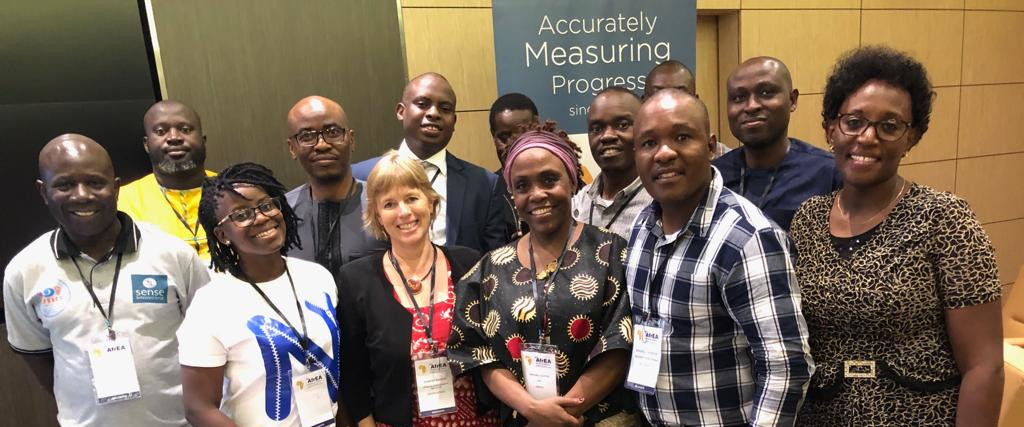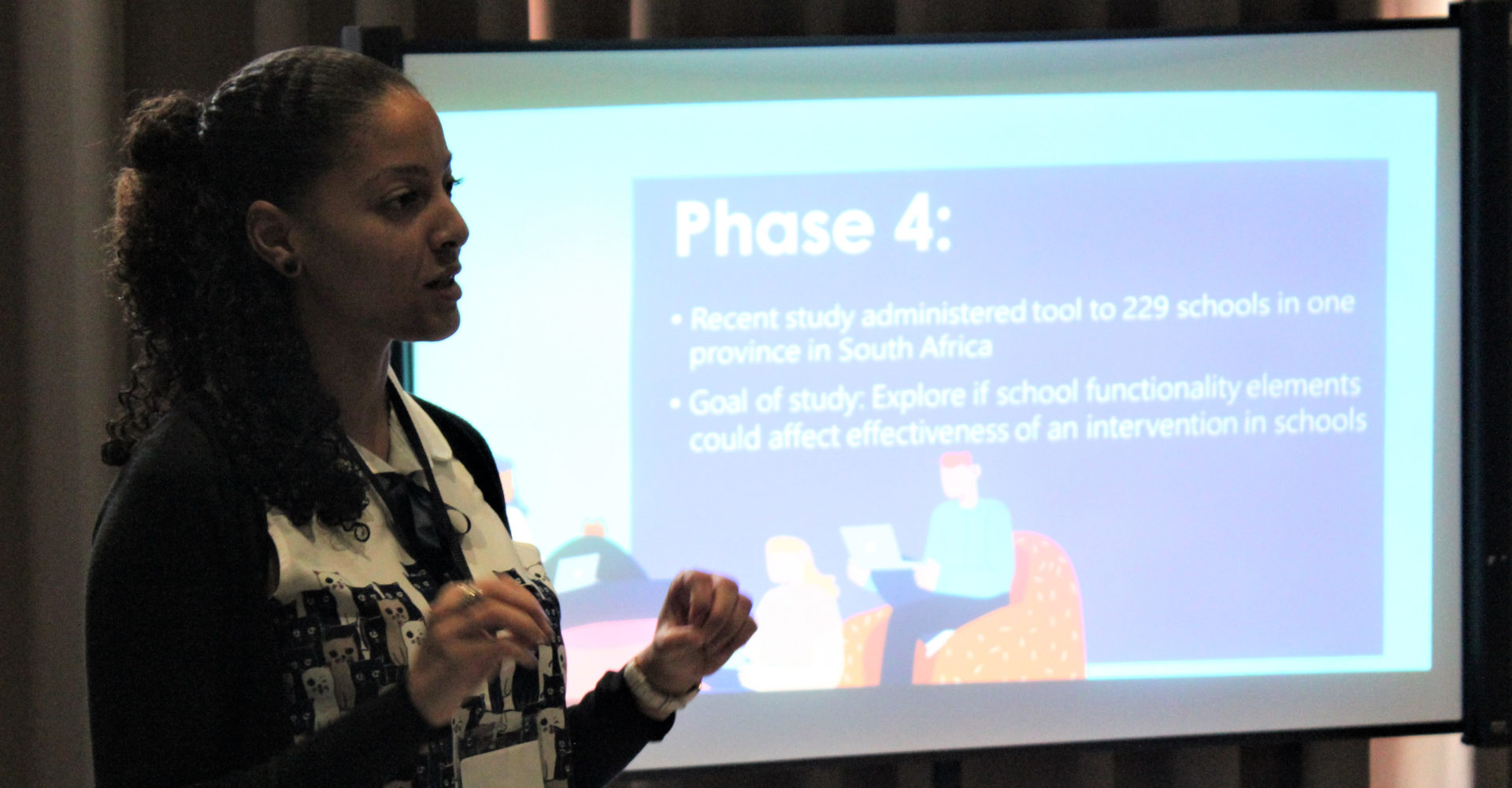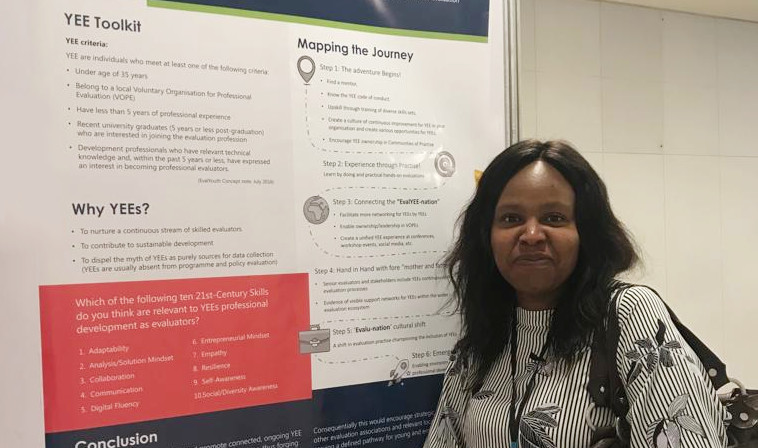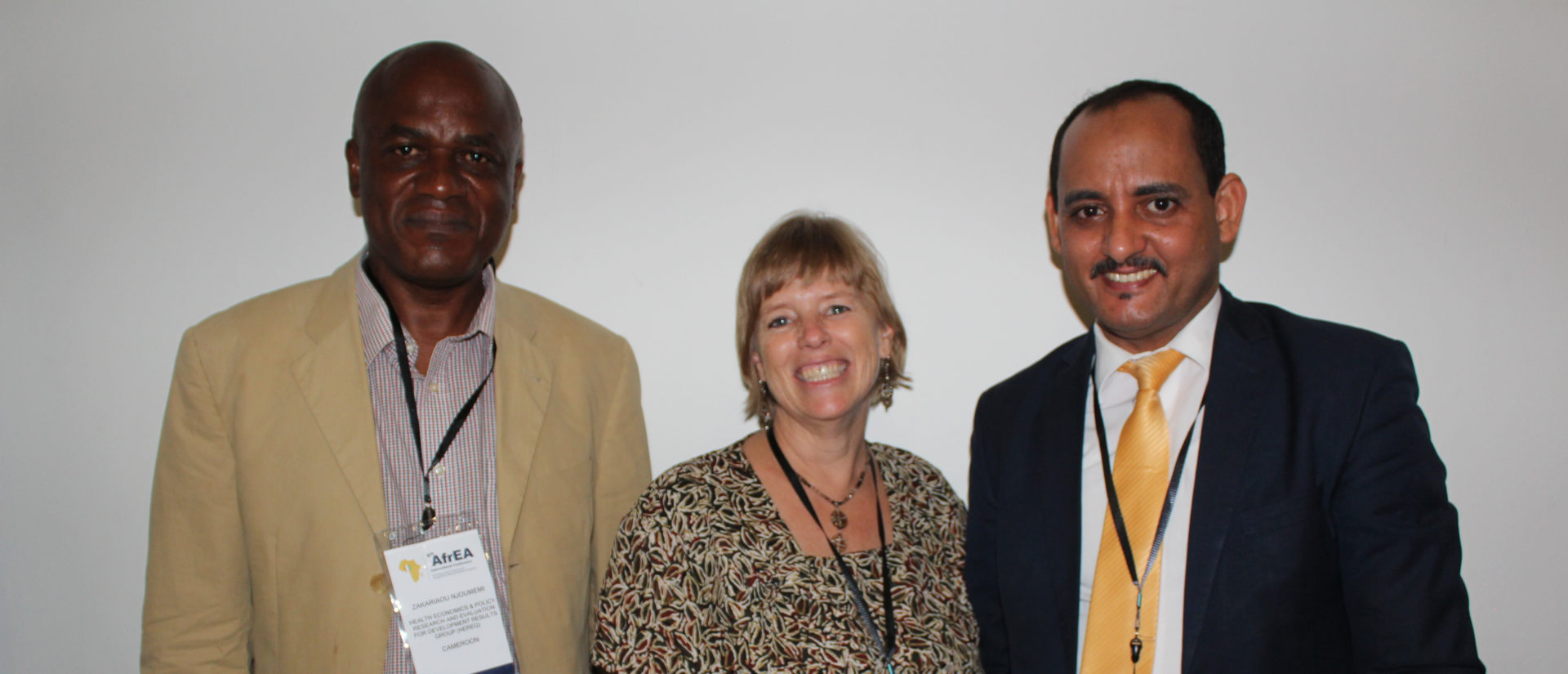Khulisa participated widely at the 9th AfrEA Conference that took place in Abidjan, Cote D’Ivoire from 11-15 March 2019. This blog shares some of our highlights – from what it takes to make a winning poster, to the things we’d like to see in Ethiopia in 2020.
The AfrEA Conference brought together 650 participants from across the world to discuss African evaluation. True to AfrEA tradition, the 2019 event offered a rich and diverse programme. Khulisa participated in five sessions:
- A half-day workshop on Setting up an Independent Evaluation Consultancy, presented by Jennifer Bisgard
- A paper on The Ins and Outs of Validating a School Functionality Assessment Tool for Evaluations by Leticia Taimo
- A paper on Equity in Evaluation, addressing the question of beneficiaries’ voices when evaluating the effectiveness of community programmes by Kris Eale
- A Made in Africa roundtable discussion, chaired by Jennifer Bisgard on Learning from Evaluation Failures with participation from Dr Zakariaou Njoumemi and Mr Ahmed Aboubacrine
- A poster presentation on young and emerging evaluators (YEEs)
We asked three Khulisa colleagues a few questions about the Conference. Here are their takeaways:
Leticia Taimo
- What stood out for you from the 9th AfrEA Conference?
Interesting people sharing approaches from all over the world (not just Africa) - What was a central theme you noted at the conference?
Many evaluations using rigorous designs like RCTs - What would you like to see at the 10th AfrEA conference in Ethiopia?
More time to network and less presentations in each slot. Five presentations in a two-hour slot meant there were no time to really engage with the content and ask questions and discuss.
Nicola Theunissen
- What was your highlights at the 9th AfrEA Conference?
I always enjoy the AfrEA energy, and seeing so many familiar faces. In terms of session highlights, I attended a panel on the Africa Evaluation Journal by Dr Mark Abrahams, Dr Florence Etta and Dr Michele Tarsilla. The Journal is one of AfrEA’s most tangible outcomes – and it’s encouraging to see how it has grown over the past five years. - What was a central theme you noted at the conference?
I think the debate around Made in Africa evaluation and using Africa-led approaches is ever-evolving. It was again a central theme at the 9th AfrEA Conference, and I love the fact that it is starting to adopt its own, pronounced identity. - What would you like to see at the 10th AfrEA conference in Ethiopia?
Possibly more sessions on the role of traditional and social media in evaluation. I liked the session on “social media use and parliamentarians” which highlighted a case study of the young parliamentarian’s association in Tanzania.
Mayibongwe Manyoba
- What was your highlights at the 9th AfrEA Conference?
One of the key highlights of the Conference was the diversity of the YEEs. This made engagements exciting, through the sharing of different country experiences and also highlighted common needs and challenges. - What was a central theme you noted at the conference?
The YEE strand provided recognition as well as a concerted drive to see how young people are incorporated into actual evaluation practises. Another theme was recognising the role of national VOPEs in strengthening national evaluation ecosystems. - What would you like to see at the 10th AfrEA conference in Ethiopia?
More interactive sessions between key stakeholders and interactions between the more experienced evaluators and the YEEs.
Poster Judges: Dr Zakariaou Njoumemi, Jennifer Bisgard and Mr Ahmed Ag Aboubacrine.
What makes a good quality poster for an #Evaluation conference?Jennifer Bisgard was asked to lead the panel judging the posters. There were at least 60 posters on display at the conference. Co-judges were Dr Zakariaou Njoumemi and Mr Ahmed Ag Aboubacrine.
The criteria used included:
The last category “Made in Africa” says that the underlying philosophy of AfrEA is to encourage African evaluators to communicate their practice, methodologies and learnings. Over the last 20 years, we have become better at communicating, but much of the world has a jump on us.
The judges eliminated the following posters:
|



